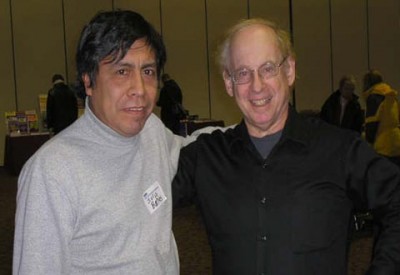Spanish Methodology
Casa Xelaju’s Spanish program uses an eclectic approach in its methodology because each individual student brings his or her own learning style.
However, in the last few years, our focus has moved away from the traditional “bottom-up” to a more “top-down” (whole language) methodology because of the latest research done by socio-linguists.
This research strongly suggests that second language learning should not be that different from how we learn the language as children.
The top-down methodology is a replica of how we learned our first language because the process is done more subconsciously through natural interactions between the learner and the teacher and members of the community such a friends and family members.
Just as we learned our first language from our parents without learning the grammatical rules first, we can learn a second language in much the same way. According to socio-linguist Steven Krashen, language acquisition happens more quickly when this method is used because the learner is exposed to meaningful input that is interesting.
In real terms of classroom instruction, top-down language instruction works this way: A whole text is presented by the teacher as a foreshadow. This whole text could be a story, song, poem, short story, etc.
After the student has a feel for what she/he will learning, the teacher begins to have the students interact with the text. This can be done using pictures, drawings, gestures, or a variety of other methods so the student experiments with the text.
After the teacher is sure the student understands the text, the teacher focuses the students’ attention on the form or specific grammar structure that (the teacher) is trying to explain to the student.
When this is done, the student and teacher work together co-constructing the grammar explanation. Finally, through an extension activity, the student experiences the grammar form first hand, with an authentic need to reproduce and use the new grammatical structure he/she has learned.
This process can be done with games, plays, or simulations of real-life situations, but not with worksheets.
Dr. Stephen Krashen (right), the creator of Comprehensive Input, with Julio E. Batres during a workshop in Minneapolis.
When the student is an
active rather than passive learner, real language learning takes place. Casa Xelaju teachers have received extensive training in top-down methodology by our director Julio E.
Batres has been teaching Spanish in the United States for 20 years. He has participated in seminars, workshops, and conferences on the whole language and other methodologies taught by the most well-known socio-linguistics in the USA and Canada.
If you need further assistant, please do not hesitate to contact us.
